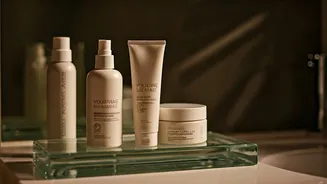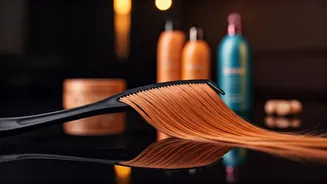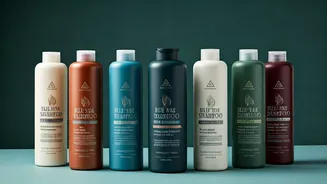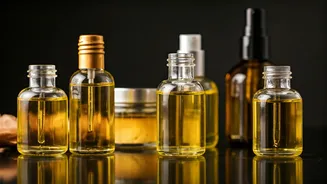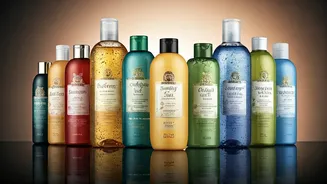Hair Texture Explained
Understanding hair's texture is the initial step toward successful hair care. Fine hair describes the diameter of each individual strand. It means the hair strands
are small in diameter. On the other hand, thin hair refers to the total number of hairs on your scalp. Someone might have fine hair but a lot of it, creating the illusion of thick hair. Conversely, someone might have thick hair strands but a sparse amount, leading to thin hair. These differences influence the types of products and styling techniques that yield the best results. Knowing whether your hair is fine, thin, or both, is the foundation for creating a personalized hair care routine that meets your specific requirements. This knowledge can also help you sidestep products and techniques that might not be suited to your hair's needs.
Identifying Hair Type
To understand your hair, start with the strand test. Place a single strand of your hair between your fingers and examine the feeling. Fine hair will feel almost unnoticeable. It might feel more like a barely-there thread. In contrast, thick hair strands will feel more substantial and prominent. Observe your scalp to assess hair density. Look at how much of your scalp is visible. A greater visibility suggests hair sparsity. This visual check can show if your hair is thin. Considering how your hair responds to different styling methods is also helpful. Fine hair can often become limp and flat easily. It is because it lacks the strength to hold volume. Thick hair, on the other hand, holds shape better, although it can occasionally be challenging to manage. Analyzing these elements allows you to pinpoint whether your main concern is fineness, thinness, or a blend of both.
Styling Fine Hair
Styling fine hair demands a delicate hand. Select lightweight products specifically formulated for fine hair. These products help in volumizing the hair without weighing it down. Begin by using a volumizing shampoo and conditioner that adds body from the roots. Avoid heavy conditioners, as these can make fine hair appear flat and lifeless. Before styling, apply a volumizing mousse or root-lifting spray to damp hair. Focus this application at the roots. For blow-drying, tilt your head upside down and use a diffuser to add volume while preventing frizz. Consider using velcro rollers for a lasting lift at the roots, promoting a fuller look. Teasing the roots gently can also provide a short-term volume boost, but use this technique cautiously to avoid damage.
Styling Thin Hair
Styling thin hair involves strategies to create the illusion of density. The goal is to maximize the appearance of fullness by carefully choosing hairstyles and using styling techniques. Begin by selecting styles that add volume and texture. Layered haircuts can provide the illusion of more hair volume because they introduce movement and dimension. A blunt cut can make hair look thicker at the ends. When styling, opt for products that build body. Texturizing sprays or dry shampoos can add grip and volume without adding excessive weight. Use these products throughout the hair. Consider using styling tools to create waves or curls, which can significantly enhance the perception of fullness. Ensure your hairstyles maintain a balance so the hair does not appear too weighed down, leading to a flatter appearance. A proper balance ensures that the hair looks effortlessly voluminous.
Product Selection Matters
The correct product selection is essential for managing fine or thin hair. Look for shampoos and conditioners specifically designed for volumizing fine hair. These products contain ingredients that coat the hair shaft, making each strand appear thicker. Lightweight formulas are critical to avoid weighing the hair down. When selecting styling products, prefer mousses, root-lifting sprays, and texturizing sprays. These add volume and hold without leaving a heavy residue. Avoid using heavy oils, thick creams, and waxes, as these can make the hair look flatter. Consider dry shampoo to absorb excess oil and create additional volume and texture. When selecting hairspray, pick a flexible, lightweight formula that provides hold without stiffness. Always read product labels, and be mindful of ingredients. Choose products that focus on boosting volume rather than adding weight or moisture.
Volumizing Haircuts & Styles
The right haircut can significantly improve the appearance of fine or thin hair. For fine hair, opt for shorter styles or medium-length layers to add movement and volume. Avoid haircuts that are too long, as they can weigh the hair down, leading to a flatter appearance. Layers are beneficial because they add dimension and lift throughout the hair, making it look fuller. For thin hair, select haircuts that provide the illusion of more density. Blunt cuts can create the impression of thicker ends. Layered styles, like the ones recommended for fine hair, work effectively as well. A skilled stylist can customize the layers to suit your hair type and face shape. Consider styles that incorporate texture or movement, such as waves or curls, to enhance the visual volume. Consult with your stylist to determine the best haircut based on your hair's specific requirements, including both fineness and thinness.
Lifestyle & Hair Health
Your lifestyle habits and overall hair health greatly impact your hair's appearance and volume. Proper nutrition, which includes proteins, vitamins, and minerals, is critical for hair growth and strength. Ensure your diet includes foods rich in iron, zinc, and biotin, as these nutrients support healthy hair follicles. Stress and anxiety can contribute to hair thinning, so incorporating stress-reducing techniques such as yoga, meditation, or regular exercise can be beneficial. Protect your hair from sun exposure, as UV rays can damage the hair shaft and contribute to breakage. Avoid excessive heat styling, such as blow-drying, curling, and straightening, as these can dry out and weaken the hair. If you use heat styling tools, use heat protectant products. Consider gentle hair care practices, such as washing your hair less frequently and using a soft towel to avoid causing damage.
Supplements for Volume
Incorporating supplements can enhance the volume and health of fine or thin hair. Biotin, a B-vitamin, is commonly used to support hair growth and strengthen hair strands, which can lead to a fuller appearance. Collagen supplements can also improve hair elasticity and promote hair thickness. Keratin supplements help by providing the essential proteins that make up your hair structure, making it appear stronger and fuller. Other beneficial supplements include vitamins A, C, D, and E, as well as minerals such as zinc and iron. These nutrients play a role in promoting healthy hair growth. Before starting any new supplement regimen, consult your doctor. They can provide personalized advice based on your individual needs and potential interactions with other medications you might be taking. Consistent use of appropriate supplements, along with a healthy lifestyle, can contribute to significant improvements in hair volume and thickness.
